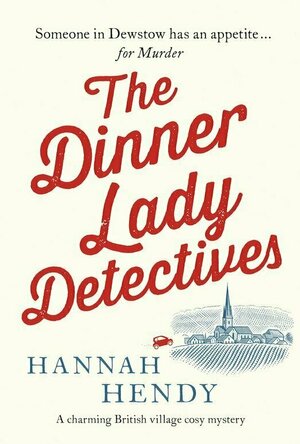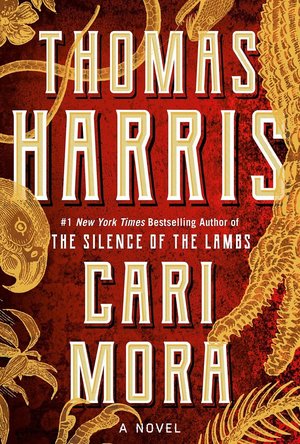
The Girls Are All So Nice Here
Book
Two former best friends return to their college reunion to find that they’re being circled by...
psychological thriller dark fiction

The Duke of Fire
Book
Miss Jane Harcourt has seen the roguish ways of men and has resigned herself to remaining alone the...
Fiction Romance Historical
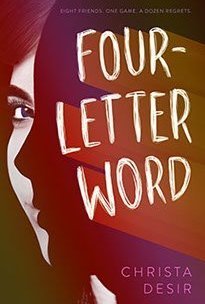
Four-Letter Word
Book
Eight friends. One game. A dozen regrets. And a night that will ruin them all, in this high stakes...
C. Desir Four-Letter Word Young Adult Games Young Adult Fiction
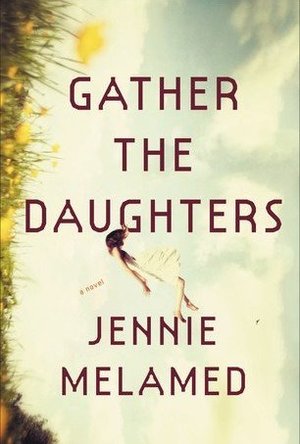
Gather the Daughters
Book
Never Let Me Go meets The Giver in this haunting debut about a cult on an isolated island, where...

Flobella Adventures in the Creative Idea Dimension: Book 1 The Creative Path
Book
The Creative Path - Imagine the possibilities... Flobella is a creatress but she doesn't know it....
MG Middle Grade Fantasy fiction children's children
Hazel (2934 KP) rated The Dinner Lady Detectives in Books
Oct 24, 2021
Margery and Clementine are dinner ladies, or to give them their official title 'Education Centre Nourishment Consultants' (really? is that what they're called now?!?!?!), and they are an absolute blast. Their relationship absolutely shines through from start to finish, it's beautiful and very authentic feeling.
Margery and Clementine smell a rat when one of their colleagues is found dead in the walk-in freezer of the school kitchen and so begins their unorthodox investigation into her death which results in all manner of escapades. There are some very funny moments (the suspended school ceiling being a particular highlight for me 🤣🤣) amongst a great and engaging plot with excellent characters throughout.
I raced through this book desperate to find out what happened and how it was all going to come together and I wasn't disappointed in the slightest and I am pleased to read on the publisher website that they have acquired the rights to a three-book deal. I think someone needs to snap this up and make a television series - I can so see Dawn French and Jennifer Saunders as Margery and Clem, in fact, that's who I was seeing in my head as I was reading it!
Highly recommended for those of you who want a break from all the doom, gloom and violence in many crime fiction books and who don't mind a bit of dark humour.
Thank you so much Canelo and NetGalley for my advance copy in return for an honest, unbiased and unedited review.
Merissa (13486 KP) rated Of Love and Betrayal (Warriors In Love #2) in Books
Apr 19, 2023
Of Love and Betrayal is the story of Aveline, on the run for killing a man. During the story, you find out that although she gave him a gruesome death, it was still far less than he deserved! The idea of being sold to pay off someone else's debts is simply diabolical, and yet it happened. Aveline is full of trauma and stress, not surprising considering what she's had to live through, but she still has a strong survival instinct and a sharp wit. As a heroine, she was wonderful, especially considering the restraints that Louise had to write within for that time.
Troy is our strong and silent hero, with a secret to hide, who is still willing to marry a stranger to keep her safe. I loved reading about him and his brothers and my heart ached for the breakdown in relationships between them, whilst still wondering what his secret could be. This deep, dark secret seemed so at odds with the person he was, and yet, once his secret was out, it was absolutely and utterly perfect for him.
With no spelling or grammatical errors that I noticed, this is another stunner from Louise Lyndon. Definitely recommended for all fans of Historical Romance!
* A copy of this book was provided to me with no requirements for a review. I voluntarily read this book; the comments here are my honest opinion. *
Merissa
Archaeolibrarian - I Dig Good Books!
Oct 23, 2015
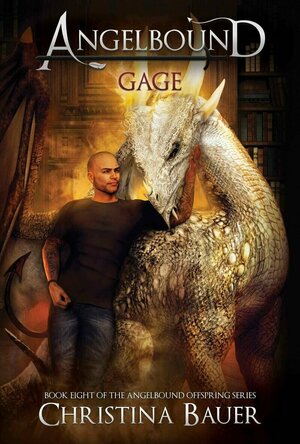
Gage (Angelbound Offspring #8) by Christina Bauer
Book
Gage runs the L’Griffe, AKA the dragon shifter mafia on Earth. Since the human realm has no...
Young Adult Fantasy Series

Angel 6.0: Concubine (Angel 6.0 #1)
Book
My name is Angel, and I live on Nugene Station. My days are filled with doctor's tests, but I spend...
Science Fiction Erotica
Written in Harris' crime fiction style, 'Cari Mora' quickly starts with men competing to get to the rumored millions of dollars in gold that is suppose to be at the Escobar mansion. One of these men is a very memorable German character named Hans-Peter Schneider, who readers come to know as someone that is hired to kill/deliver people to rich customers, as well as selling organs on the black market: " He [Schneider] could see his reflection in the glass side of his liquid cremation machine where he was dissolving Karla, a girl who hadn't worked out for business." When Schneider meets Mora, he immediately wants to sell her to a high paying customer.
The novel's main subject is Escobar's hidden gold, but readers also get a glimpse into the underworld of human trafficking and hired thugs. Most interestingly, the story surrounds the dark past of certain characters - - - mostly Mora and Schneider- - - who also happen to be the most put-together characters in all of the novel. All other characters seem to be filler, where most of their stories either don't end or aren't explained. Such as the character Benito, when the reader gets to follow him home, there is a mere snippet about his family life that leaves us wanting more: " Lupe was waiting at Benito's house, in spirit, in the small garden she had made behind Benito's house. He felt her presence warm and close to him as fireflies winked over the white blossoms, luminous under the moon. Benito poured a glass of Flor de Cana for himself and one for her. He drank both of them sitting in the garden with Lupe, and being there together was enough. "
While the treasure hunt is going on, a man named Jesus Villarreal becomes an important character that used to be Escobar's captain- - - and who knows exactly where the gold is hidden; he has not only made a deal with Schneider, but also another drug lord named Don Ernesto- - - if he tells exactly how to get the gold, safely, his wife, son and sister-in-law must be taken care of when he is gone.
This story has twist and turns known in every great crime fiction novel: a woman who is more than what she seems, thugs with guns, dark backstories, and fast-reading action. Yet, the story contains so many characters,even new ones coming in on almost every chapter, that it could be hard for readers to keep in mind who is who, especially with not enough description to tell them apart. Another disappointment is the character named Detective Terry Robles, who had such an amazing story to tell - - - from he and his wife being shot up by druggies to Robles seeking revenge when his wife can't exactly remember who she is,let alone who he is, because of her injury - - - but his story never comes to fruition, and we never get to experience the end of it.
As great as a character Mora is, I personally believe that Schneider would have been a much more interesting view point to read from. The story would have taken on a completely different appeal if the focus had been on strictly him. For instance, one of the most intriguing parts was reading about Schneider's past which may hold the key to why he is who he is : "His parents were in the freezer and he could hear their voices through the door. They could not get out because the freezer door was secured with a chain Hans had tied in an excellent chain knot, the way his father had taught him to tie a chain, shaking the knot until the links jammed tight. "
Although I wish for a different view point, I will say again that Mora is a well-written character - - - her character just becomes flat in certain places- - - but she still makes the story worth reading. Harris did a wonderful job in showing the darker side of life, as he has always done with his Hannibal series. If anyone is a fan of the Netflix show 'Narcos,' or crime fiction surrounding drug lords, they will certainly enjoy this book from beginning to end.
